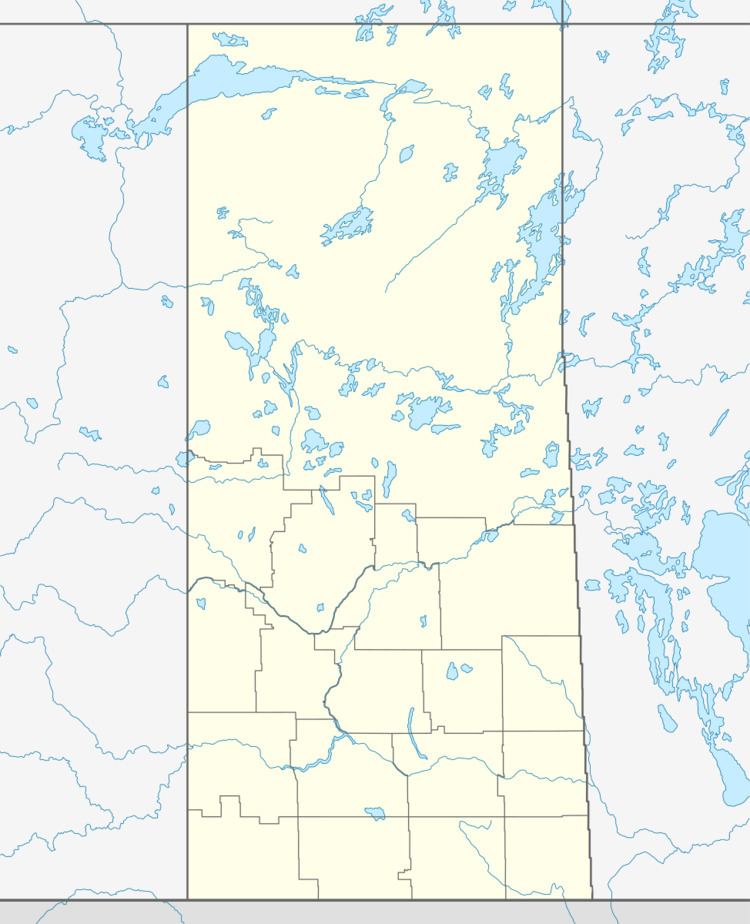Country Canada Post office Founded as Boucher, Saskatchewan NWT 1888-02-01 Time zone CST (UTC-6) Area 108 ha Local time Friday 5:56 PM | Post office Founded as St. Louis, Saskatchewan NWT 1897-05-01 Postal code S0J 2C0 Population 445 (2011) | |
 | ||
Weather 2°C, Wind E at 23 km/h, 67% Humidity | ||
St. Louis is a Canadian village in the province of Saskatchewan, south of Prince Albert and northeast of Batoche. It was founded by Métis settlers in the late 19th century, and is the northernmost Southbranch Settlement, a series of communities which range from Fish Creek in the south along the South Saskatchewan River through Batoche and St. Laurent to St. Louis. St. Louis is within the boundaries of the rural municipality St. Louis No. 431. The village has a mayor to govern civic infrastructure and municipal policy. St. Louis is also within SARM Division No. 5 and Census Division No. 15, Saskatchewan. St. Louis is located in the aspen parkland biome.
Contents
- Map of Saint Louis SK Canada
- History
- Geography
- Demographics
- Area statistics
- Attractions
- Infrastructure
- Notable people from St Louis
- References
Map of Saint Louis, SK, Canada
History
St. Louis is home to a large archaeological site of aboriginal artifacts predating those found at Wanuskewin near Saskatoon, Saskatchewan. Key discoveries at the site have included new species of wolf and buffalo approximately 25% larger than modern species and a bead that indicates decoration of clothing about 1000 years earlier than previously thought.
St. Louis is just northeast of South Branch House, one of many small trading posts from fur trading days; this post was attacked and burnt by the Atsina in the 18th century in retaliation for the company's supplying their enemies the Cree and Assiniboine with guns and goods.
The first post office was founded under the name of Boucher, Saskatchewan NWT on 1 February 1888 with the first post master being Reverend Eugene Lecoq. The post master was succeeded by Jean Baptiste Boucher Sr who homesteaded at Sec.11, Twp.45, R.27, W2 which happened to also be the location of the post office. In 1897-05-01 the post office changed names to St. Louis, Saskatchewan NWT. Historically it was bordered by the Anglo-Métis settlements of Halcro and Red Deer Hill to the north.
Geography
The nearest community of size is Prince Albert a twenty-minute drive to the north. St. Louis is located at an intersection of Highway 2 north/south and Highway 25. The grid road Highway 782 continues westerly along the South Saskatchewan River to arrive at Duck Lake.
Demographics
Although English is the predominant language in the community now, there is still a large Métis and French population today.
Area statistics
Attractions
Locally it is known also for the St. Louis Light, an allegedly paranormal phenomenon, the historic St. Louis Bridge and the picturesque beauty of the South Saskatchewan River.
A large bison sculpture of an extinct species that was 25% larger than modern bison is on display. The sculpture was the last work of Ralph Berg (1952-2004) who created other monumental pieces in Saskatchewan and Manitoba.
The community sponsors many events throughout the year. These include:
Infrastructure
As is the case with many small towns in Saskatchewan, the lack of economic growth is a concern. The province has announced that the original St. Louis Bridge will be closed down in the future and a new bridge will be constructed. The new bridge, however, will be located more than a mile from the edge of the village. Thus, many residents and businesses are concerned about the possible financial impact on the village.
St. Louis remains a vibrant community. It has:
